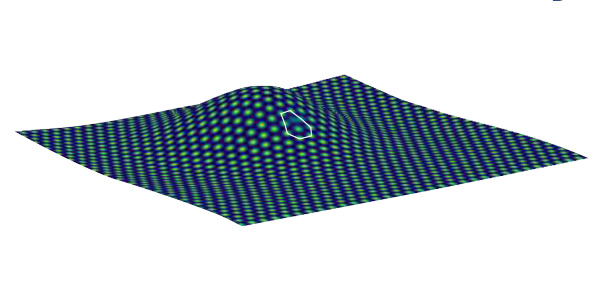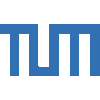Ordering and defects on deformable surfaces

Elastic and plastic properties of thin sheets have been found responsible for peculiar behaviors of biological and physical systems and enabled remarkable technological applications. However, theoretical frameworks that comprehensively study the interplay of deformations, defects, and evolving film morphology, are missing, primarily due to the complexity related to the bridging-scale nature of the emerging phenomena. In this project, we develop a mesoscale framework to study positional ordering and defects on deformable surfaces. We aim at closing the gap between macroscopic descriptions of elastic films and microscopic material models that resolve interactions between objects such as atoms or cells. For this goal, we will consider two mesoscale modeling approaches and develop their extension to non-flat domains. Positional ordering and defects in crystalline solid or colloidal structures will be investigated by the amplitude expansion of the phase-field crystal model, which handles elasticity and plasticity at the mesoscale without resolving atoms but retaining details of the crystal structure. Orientational ordering and deformable interacting objects, e.g., cells in epithelial tissues, will be modeled by a multi-phase-field approach governed by Allen-Cahn type equations and coupling with director and Q-tensor fields. Formulations suitable for non-flat domains will be developed via a general graph formulation. The implementation in a suitable finite element framework will be developed and exploited for numerical simulations. With the resulting framework, we aim to address relevant questions such as defect motion and stability of defect on deformable surfaces, strain-induced ordering, response to prescribed curvatures, and surface-buckling in epithelial tissues. Also, we will devise microscopically informed continuum models for macroscopic investigations.
Project group
- Dr. Marco Salvalaglio
- Prof. Dr. Axel Voigt
- Lucas Benoit--Maréchal
- Ingo Nitschke
- Jan Sischka
Publications
| Lucas Benoit--Maréchal, Ingo Nitschke, Axel Voigt, and Marco Salvalaglio, Mesoscale modeling of deformations and defects in thin crystalline sheets, In Mechanics of Materials, Vol. 198, pp. 105114, 2024. [doi] [bibtex] |
| Archit Bhatnagar, Michael Nestler, Peter Groß, Mirna Kramar, Mark Leaver, Axel Voigt, and Stephan W. Grill, Axis convergence in C. elegans embryos, In Current Biology, Vol. 33, pp. P5096-5108.E15, 2023. [doi] [bibtex] |
| Rainer Backofen, Abdelrahman Y. A. Altawil, Marco Salvalaglio, and Axel Voigt, Nonequilibrium hyperuniform states in active turbulence, In PNAS, Vol. 121 (24), pp. e2320719121, 2024. [doi] [bibtex] |
| Ingo Nitschke and Axel Voigt, Tensorial time derivatives on moving surfaces: General concepts and a specific application for surface Landau-de Gennes models, In Journal of Geometry and Physics, Vol. 194, pp. 105002, 2023. [doi] [bibtex] |
| Michael Nestler, Simon Praetorius, Zhi-Feng Huang, Hartmut Löwen, and Axel Voigt, Active smectics on a sphere, In Journal of Physics: Condensed Matter, Vol. 36 (18), pp. 185001, 2024. [doi] [bibtex] |
| Lucas Benoit--Maréchal and Marco Salvalaglio, Gradient elasticity in Swift-Hohenberg and phase-field crystal models, In Modelling and Simulation in Materials Science and Engineering, Vol. 32 (5), pp. 055005, 2023. [doi] [bibtex] |
| Ingo Nitschke, Souhayl Sadik, and Axel Voigt, Tangential tensor fields on deformable surfaces — how to derive consistent L2-gradient flows, In IMA Journal of Applied Mathematics, Vol. 88 (6), pp. 917–958, 2023. [doi] [bibtex] |
| Lea Happel and Axel Voigt, Coordinated Motion of Epithelial Layers on Curved Surfaces, In Physical Review Letters, Vol. 132, pp. 078401, 2024. [doi] [bibtex] |






